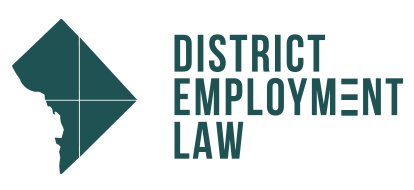
SOX’s Anti-Retaliation Protections for Whistleblowers
Section 806 of the Sarbanes-Oxley Act (SOX) prohibits covered employers from retaliating against workers who report certain types of corporate fraud or other securities-law violations.
Our Frequently Asked Questions (below) provide employees insight into Section 806, including how to make reports protected by SOX, and what to do if you face retaliation.
What is SOX, and how does it protect me?
In 2002, Congress passed SOX in response to a series of billion-dollar accounting scandals by corporate giants, including Enron and WorldCom. SOX, which was subsequently amended by the Dodd-Frank Wall Street Reform and Consumer Protection Act of 2010, aimed to restore investor confidence in the market by improving the accuracy and reliability of corporate disclosures, strengthening corporate governance, and increasing corporate accountability.
In passing SOX, Congress recognized the critical role of whistleblowers in identifying and stopping fraud, noting that “corporate insiders are often the only ones who can disclose what happened and why.” To encourage whistleblowers to come forward, Congress passed Section 806—a federal anti-retaliation provision that provides certain protections to whistleblowers. See 18 U.S.C. § 1514A.
Specifically, Section 806 prohibits a covered employer from retaliating against an employee who provided information, caused information to be provided, or otherwise assisted in an investigation, concerning conduct that the employee reasonably believes violates one of the laws or regulations set forth in Section 806 (mail fraud, wire fraud, bank fraud, securities fraud, a violation of any rule or regulation of the U.S. Securities & Exchange Commission (SEC), or any federal law related to fraud against shareholders).
Does Section 806 prohibit my employer from retaliating against me?
Section 806 applies to any company with a class of securities registered under section 12 of the Securities Exchange Act of 1934 (Act), or that must file reports under section 15(d) of the Act.
Typically, domestic issuers registered under section 12 of the Act must file 10-K reports (annual reports) with the SEC. You can determine if a company files 10-K reports, and obtain copies of them, through the SEC’s EDGAR database. Companies that must file reports under section 15(d)—including Form N-CSRs, Form N-Qs, or Form N-SARs—include investment companies and issuers of debt securities.
You can learn more information about the SEC’s EDGAR database and how to locate these reports here.
Section 806 also applies to a non-public subsidiary or affiliate of a public company if the public company includes the subsidiary’s or affiliate’s financial information in its consolidated financial statements.
Further, if you work for a non-public company that serves as a contractor or subcontractor to a public company, SOX’s anti-retaliation provision may apply.
In addition, SOX’s anti-retaliation provision covers credit rating agencies that meet certain requirements.
How do I establish a SOX-retaliation claim?
To establish a prima facie retaliation claim, you must show that: (1) you engaged in “protected activity”; (2) your employer knew that you engaged in protected activity; (3) you suffered an unfavorable employment action; and (4) your protected activity was a “contributing factor” in the unfavorable action. See 29 C.F.R. § 1980.104(e)(2).
What is “protected activity” under SOX?
Only certain disclosures amount to “protected activity” under SOX.
First, you must make your report to an appropriate individual.
You may report your concerns:
- to a supervisor;
- to another employee who is authorized to investigate, discover, and end the misconduct you reported;
- to a federal regulatory or law enforcement agency, such as the SEC;
- to a member of Congress or a member of a Congressional committee; or
- in the course of a proceeding related to the company’s alleged wire fraud, mail fraud, bank fraud, securities fraud, violation of an SEC rule or regulation, or violation of a federal law related to fraud against shareholders.
Second, the content of your report must concern the laws set forth in Section 806.
Specifically, your report must relate to the company’s:
- commission of wire fraud, mail fraud, bank fraud, or securities fraud;
- violation of an SEC rule or regulation; or
- violation of a federal law related to fraud against shareholders.
When you make your report, you don’t need to use “magic words” or cite the laws that you believe your employer violated. However, from a strategic standpoint, it is best to be as specific as possible. You should frame the reported violation as wrongdoing that fits within the laws set forth under Section 806 (mail fraud, wire fraud, bank fraud, securities fraud, a violation of an SEC rule or regulation, or a violation of a federal law related to fraud against shareholders).
Third, you must have a “reasonable belief” that your employer violated one of the laws set forth in Section 806.
The reasonableness of your belief will be evaluated from objective and subjective viewpoints.
The objective reasonableness of your belief is evaluated based on the knowledge available to a hypothetical reasonable person in the same factual circumstances and with the same training and experience as you.
You can establish that your belief was subjectively reasonable if you actually believe that the company has violated, is violating, or is likely to violate, the relevant laws.
Importantly, you do not need to prove that the company actually violated the law to prove that your belief was reasonable. You may have a reasonable but mistaken belief that your employer violated SOX.
What are some examples of protected activity?
Reports about the following types of conduct may constitute protected activity:
Improper revenue recognition.
Generally, a company may not recognize revenue until the company realizes and earns it. Improper revenue recognition comes in a variety of forms, including companies’ artificial inflation of their earnings to attract potential investors.
For instance, improper revenue recognition occurs when:
- a company engages in channel-stuffing by prematurely sending products to a customer in Q4 2023 instead of Q1 2024, when the order was supposed to ship, so that the company can include the additional revenue from the sale in its financial statements for 2023;
- a company concocts sham sales to bolster its revenue for a certain period, even though the sales never take place;
- a company recognizes revenue from contingency sales (including contingencies set forth in side agreements) before the contingency has resolved;
- a company recognizes revenue from consignment sales when the company ships the products to the consignee, instead of when the consignee resells the products;
- a company understates or defers its expenses/losses to falsely elevate its overall profit; or
- a company “washes” losses from the sale of one product with profits from the sale of another product to make the first product appear more successful.
Deficiencies in internal controls.
A public company must develop a system of internal accounting controls to provide reasonable assurance that it accurately records its transactions and prepares its financial statements in accordance with the generally accepted accounting principles (“GAAP”). As an example of deficient internal controls, let’s suppose that a company’s sales system automatically duplicates each sale—and thus, the revenue from each sale. A report about this deficiency likely would constitute a report about an internal control deficiency protected by SOX.
Inaccurate books and records.
A books and records violation may occur if a company does not keep its books, records, and accounts in reasonable detail, or its books and records do not accurately reflect the company’s transactions.
Violation of SEC Rule 10b-5.
In connection with the sale of securities, companies may not make false statements of material fact, or omit material facts that are necessary to make its statements not misleading.
What is an unfavorable employment action?
A retaliatory action is any action that is harmful enough that it well might have dissuaded a reasonable worker from engaging in protected activity.
For example, the U.S. Department of Labor (DOL) and federal courts have found that, in certain contexts, Section 806 prohibits the following types of unfavorable employment actions:
- Termination;
- Non-promotion;
- Demotion;
- Suspension;
- Decrease in compensation;
- Transfer to less-favorable position;
- Change in work hours;
- Diminished job duties;
- Removal of supervisory duties;
- Exclusion from substantive meetings;
- Downgraded performance review;
- Initiation of a retaliatory investigation;
- Disciplinary action;
- Harassment;
- Revealing the identify of a whistleblower who filed a confidential complaint;
- Ostracism;
- Placement on administrative leave;
- Inclusion on a lay-off list; and
- Constructive discharge.
Whether Section 806 covers a certain action depends on the facts and circumstances of a particular case.
What is a “contributing factor” under SOX’s anti-retaliation provision?
The DOL’s Administrative Review Board (ARB) has defined a “contributing factor” as “any factor, which alone or in combination with other factors, tends to affect in any way the outcome of the decision.”
In other words, to prevail in a SOX-retaliation case, you do not need to prove that your protected activity was the only or primary cause of the unfavorable employment action. Rather, you can prevail if you prove that your whistleblowing was one factor among many that, “in any way” resulted in the unfavorable action.
How do I prove that my protected activity was a contributing factor?
In rare circumstances, a supervisor may admit (perhaps to their trusted colleague) that they fired you because you engaged in protected activity. However, sophisticated employers typically do not provide such direct evidence of their retaliatory animus. When they do, the evidence tends to be buried in private text messages or email accounts—evidence to which you don’t have access at the start of your case.
Therefore, we usually use indirect evidence to prove causation in SOX-retaliation cases. Below is a non-exhaustive list of the types of circumstantial evidence we typically rely on:
Temporal proximity.
When an employer takes unfavorable employment action against you shortly after you reported a suspected SOX violation, the timing between your report and the unfavorable action, alone, may establish a causal link.
Pattern of antagonism.
When the employer takes multiple unfavorable actions against you over a period of time, the employer’s pattern of conduct may establish causation.
False and pre-textual explanation.
When an employer provides a false and pre-textual explanation for the unfavorable employment action, an inference may arise that retaliation was the real reason for the decision. For instance, suppose that your employer claimed it fired you because you repeatedly came to work late. However, the company’s time records establish that you never reported late. Further, the company did not discipline—let alone fire—four other employees who are not whistleblowers, and who routinely reported late. Such evidence could lead a jury to conclude that the employer’s alleged reason for firing you—that you were late—was false and pre-textual, and that the real reason was retaliation for your whistleblowing.
Shifting explanations.
If an employer initially provides one reason for your termination, but subsequently changes its explanation, this shift could be evidence of retaliation. Suppose that when your employer falsely claimed that it fired you for reporting late, you stated that you never came to work late. Recognizing that its false narrative would not hold up, your employer changed its story and now claims that it fired you because you did not get along with your co-workers. Evidence of your employer’s shifting explanations can help prove causation.
Differential treatment.
Preferential treatment of similarly situated employees who did not engage in whistleblowing can be evidence of retaliation. Imagine that after you reported your employer’s SOX violations, you reported to work late one time, and your employer seized upon the opportunity to fire you. However, four of your colleagues, who did not engage in protected activity, and who routinely came late, did not face any discipline. Your employer’s preferential treatment of your colleagues may establish the causal link between your protected activity and firing.
What happens after I establish the elements of a SOX-retaliation claim?
After you establish a prima facie case of SOX retaliation, the legal burden shifts to your employer to prove by clear and convincing evidence that it would have taken the same action against you, even if you had not engaged in protected activity.
Importantly, the “clear and convincing evidence” standard an employer must meet is higher than the “preponderance of the evidence” standard by which you must prove your case if you litigate your claims.
What is the process for filing a SOX-retaliation complaint?
1. File with OSHA within 180 days of the retaliation.
Before you can file a lawsuit for SOX-retaliation in federal court, you must first exhaust your administrative remedies by filing a complaint with DOL’s Occupational Safety & Health Administration (OSHA). OSHA investigates complaints about whistleblower retaliation under SOX, as well as retaliation complaints under twenty-one other laws.
Generally, you must submit your SOX-retaliation complaint to OSHA within 180 days of the retaliation.
You may file your complaint orally or in writing, and you must submit it to the local OSHA Regional or Area Office.
2. OSHA investigation.
After you file your complaint, OSHA will determine if the complaint, combined with supplemental information it collects, sets forth a prima facie case of SOX retaliation. If it does, OSHA will move forward with an investigation. If it does not, OSHA will dismiss the complaint.
During the investigation, OSHA will interview witnesses and collect additional evidence about your claims and the company’s defenses. The company will also have a chance to submit a position statement in response to your complaint. You should request a copy of the position statement so that you may address any inaccuracies or omissions.
If OSHA’s investigation reveals “reasonable cause” to believe that unlawful retaliation occurred, OSHA will issue findings and a preliminary order against the company. If OSHA does not find reasonable cause, it will dismiss your complaint.
OSHA describes its “reasonable cause” standard as “somewhat lower than the preponderance of the evidence standard.” To make a reasonable-cause determination, OSHA must determine that some evidence exists to support each element of a SOX-retaliation claim.
3. Hearing before ALJ.
Either side—you or your employer—may object to OSHA’s findings and request a hearing before an administrative law judge (ALJ). Before the hearing, both sides have the chance to obtain evidence relevant to your claims and the company’s defenses through the discovery process. During the hearing, you and the company must introduce evidence into the hearing record. Based on the evidence introduced, the ALJ will make a ruling.
You or your employer may appeal the ALJ’s decision to the ARB.
What if DOL does not issue a decision on my SOX-retaliation complaint within 180 days?
If the DOL has not issued a final decision on your SOX-retaliation complaint within 180 days of the date you filed it, and you did not engage in bad-faith conduct that caused the delay, you may file your claims in federal district court, where you are entitled to a jury trial.
What relief is available under SOX’s anti-retaliation provision?
If your employer violated SOX’s anti-retaliation provision, you may be entitled to lost wages and benefits (back pay plus reinstatement or front pay), unlimited special damages for emotional distress and injury to your reputation, and attorney’s fees and costs.
Does Section 806 prohibit individuals from retaliating against whistleblowers?
Yes, SOX’s anti-retaliation provision applies to any officer, employee, contractor, subcontractor, or agent of a covered entity.
Importantly, when you file your SOX complaint with OSHA, you must name any individuals that you intend to hold liable for retaliation.
How could I benefit from an attorney’s assistance?
An experienced employment attorney can provide critical assistance with many aspects of your case.
First, an attorney can facilitate your protected activity by ensuring that you report to a covered individual and frame your report in a way that is protected under Section 806. They can evaluate whether, from a strategic standpoint, you should make your disclosure internally within the company, externally to a regulator or another entity, or to both, and advise you on how to time and sequence such disclosures. They can also assess if other laws offer additional protection and ensure that you qualify for protection under those laws by following their disclosure provisions.
Further, if you face retaliation, skilled SOX counsel can help you draft and file your OSHA complaint to ensure that it sets forth a prima facie case of retaliation. They can represent you during OSHA’s investigative process–including accompanying you to interviews, corresponding with OSHA investigators, drafting a response to the employer’s position statement, and helping you collect, select, and present evidence.
Moreover, an experienced employment lawyer can help you understand and comply with any legal duties you owe to your employer (such as contractual and confidentiality obligations) while making external reports and pursuing your legal claims.
Helpful OSHA Resources:
- Investigator’s Desk Aid to the Sarbanes-Oxley Act Whistleblower Protection Provision
- Whistleblower Investigations Manual
- What to Expect During a Whistleblower Investigation
- Filing Whistleblower Complaints under the Sarbanes-Oxley Act
Contact us if you face retaliation because you have reported a SOX violation, or to receive more guidance on how to make a protected disclosure. We are very familiar with SOX-retaliation claims and have represented whistleblowers during informal negotiations with their employers, at OSHA, and in federal court. We encourage you to obtain experienced employment counsel to help you navigate SOX and avoid common pitfalls that many employees fall into.
This blog post has been prepared for informational purposes only. This blog post is not intended, and should not be construed, as legal advice. The information contained in this blog post is not intended to create an attorney-client relationship, and the receipt of this information does not constitute attorney-client privileged legal advice.


